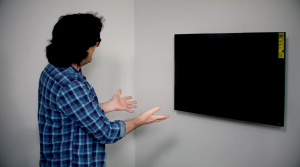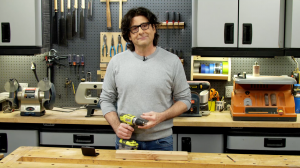How to Remove an Electrical Outlet and Replace it with a GFCI
A water source near an electrical source can result in a deadly shock but there is a way to prevent that kind of accident by replacing these conventional receptacles with this, a ground fault circuit interrupter or GFCI receptacle.
First, make sure you turn off the power at the circuit breaker or fuse box. Now a good way to check to be sure that there is no power here is to plug in a working night light. It shouldn't come on.
First, take off the cover plate. Then remove the two screws, one top and one bottom that hold the receptacle in place. Gently pull the receptacle out of the wall. Remove first the black wire from its terminal and then the white from its.
Finally, detach the ground wire. That's the one that usually looks like bare copper. The GFCI that we're installing requires straight ends on the wires. So we'll snip off these hooks. We'll also need to remove about one half inch of the wire covering using these wire strippers.
Insert the stripped ends of the wires in the back of the GFCI receptacle and tighten the terminal screw. Read the instructions thoroughly so you'll be sure and put the wires on the correct terminals, then attach the ground wire.
Finally, fold the wires and gently push the GFCI back into the electrical box. Restore power at the circuit breaker or fuse box and then check with the night light to make sure that the circuit is working. One final step: push the small black button right here. The red button next to it should pop out. This means that the protection is in fact, working.
Blog Articles
Expert Tips: How to Mount a TV on the Wall
Get step-by-step instructions on how to mount a TV on the wall, especially for big screen TVs. Master the art of wall mounting with our tips.
Frustrated by Stripped Screws? Here’s How to Get Them Out Fast
We've all been there. You're in the middle of a project, and suddenly your screwdriver spins uselessly in the screw head. The screw is stripped, and frustration sets in. With a little know-how and this simple trick, you can tackle a stripped screw and get your project back on track.
The Secret to Finishing Plywood Edges
Plywood projects are fantastic, but exposed edges can be an eyesore. This blog post unveils the magic of edge banding - a simple technique to create flawless, finished edges on your plywood projects, making them look professional and ready for paint or stain. Watch the video to learn how to apply edge banding like a pro!





